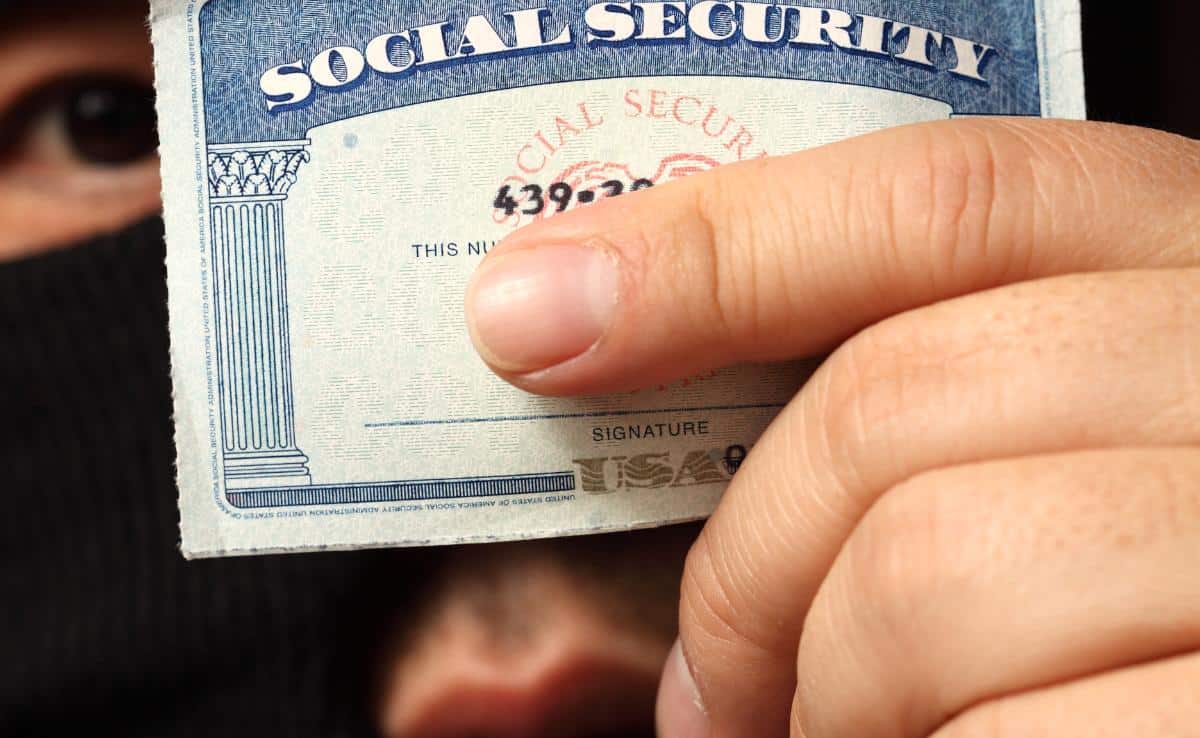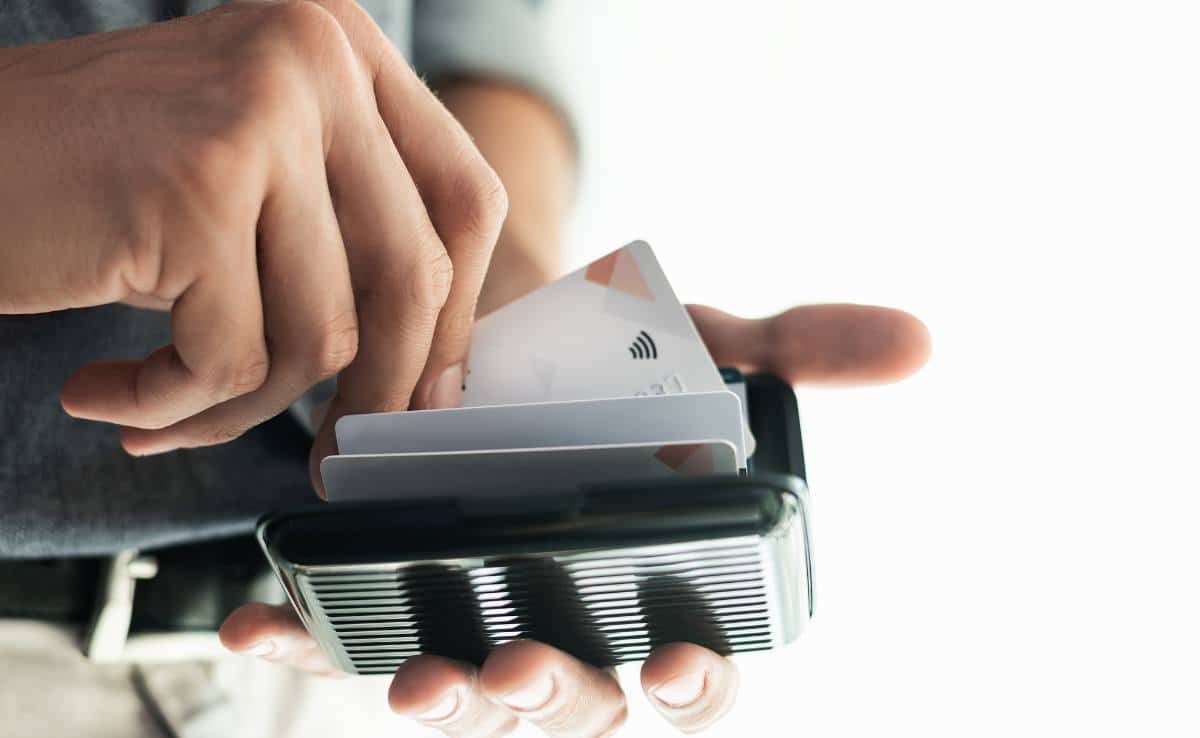How To Check For, Avoid, Prevent, Monitor & Report Identity Theft
When you purchase through links on our site, we may earn a commission. Here’s how it works.

Jane bought a gift for her friend online. A week later, that website was hacked, and her data was stolen. Random charges started appearing on her credit cards, and her bank account dwindled to nothing. She struggled to pay her bills, and it wasn’t her fault. She didn’t know what to do, how to get her money back, or how to make it stop. Too many people find themselves in a situation like this. Fortunately, we can help you check for, avoid, prevent, monitor, and report identity theft.
What Is Identity Theft?
Identity theft arises when someone uses your personal information—name, address, social security number, credit card number, medical insurance account number, or other identifying information—without your knowledge to commit fraud or other criminal activities.
5 Examples Of ID Theft Crimes
- Making purchases with your credit card number
- Opening new lines of credit or taking out a loan in your name
- Using your health insurance to get medical care
- Setting up a phone or utilities account in your name
- Pretending to be you during an arrest
Identity theft can happen to anyone and can cause damage to your name, bank account, and credit record. Victims of identity theft spend significant amounts of time and money to clean up the damage made. Plus, the psychological toll that identity theft can leave on a person can be exhausting.
How Does Identity Theft Happen?
Thieves steal your personal information in various ways—from fake lottery wins to dumpster diving.
Top 4 Ways Identities Get Stolen
- Stealing wallets, purses, mail, etc., for credit cards, bank statements, new checks, and tax information
- Rummaging through the trash for personal information
- Rigging ATM and payment machines to trap cards or steal PINs and other card information (skimming)
- Using the promise of a job opportunity or sweepstakes win to gather your personal information
As technology develops, so too do opportunities for internet theft—and scammers are only getting smarter and faster. Standard techniques used in cyber identity theft include:
Phishing, Vishing, and Smishing
What Is Phishing?
Don’t Take The Bait
The “Nigerian prince” email scam, also dubbed the 419 scam, is the classic example of a phishing attempt—and one of the longest-running. In this scenario, the fraudster lures you in by posing as a person of wealth who needs to transfer a large quantity of money out of their country and offers you a share for your assistance. The scammer then requests your bank account information to “transfer the money” or a similar request.
Scammers Can Impersonate Anyone, At Anytime
While you may believe only the technology illiterate get phished, scammer capabilities go far beyond a fantastical foreign money exchange. Scammers can impersonate anybody, including people you know. For example, let’s say you receive an email from a “coworker” asking you to review a link they sent—maybe it’s an invoice or an important PDF. You click the link, which leads you to a page that looks like a Google Drive login page, and it asks for your username and password.
In reality, the scammer leads you to a page impersonating Google to get your login details. You enter your login details and your two-factor authentication code, which all gets sent to the scammer. Now, they can get into your email. Maybe they trick a family member or friend into believing you’re in financial trouble and need help. This process may occur in mere minutes.
What Are Vishing And Smishing?
3 Examples Of Vishing And Smishing Attacks
- An alert from a financial institution: In this scenario, the fraudster will either text to call to alert the victim that there’s a problem with their credit card. From there, they will get your financial information over the phone.
- Social Security Number request: A criminal often impersonates a government agency in these scams. The fraudster may claim that your social security number has been suspended and ask you to confirm it so it can be reactivated.
- Billing by a tech support service: This attack occurs by scammers informing you that a problem has been detected on your computer and telling you to dial a number to receive technical support. Scammers then charge you a fee as payment for repairing the “problem.”
Hacking
While phishing relies on victims providing information voluntarily—albeit through deception—hacking involves disabling security measures to gain pirated access to an account or computer system. In wireless hacking, thieves will connect to your computer to look for personal or valuable information.
5 Examples Of Hacking
- Malware and other viruses: Scammers will send texts or emails with links that contain malware. By clicking on the link, your device becomes infected, and the hacker can access your computer with you none the wiser.
- Tech support: Like with tech support phishing, a scammer will contact you and try to convince you that you need technical support. If the scammer is a hacker, they will ask for access to your computer to “fix” the issue but take control of your device instead.
- Outdated software: Developers release software updates to address security vulnerabilities. If your system isn’t current, you become a more-likely target; hackers can take advantage of known security issues.
- Wi-Fi network: Some hackers attack the Wi-Fi network, gaining access to any connected device.
- Dark Web: If you had sensitive information exposed in a data breach, it might be up for grabs on the dark web. The dark web is where scammers and hackers purchase and sell stolen information.
What Is Keylogging?
A skilled hacker can steal your money, destroy your credit score, use your Social Security Number, destroy important files, and sell or share your personal information with others.
What Is Social Engineering?
SIM Swapping
Nowadays, almost everyone has a smartphone, and we use it for everything: sending messages, taking photos, scheduling appointments, and transferring money. Most phones require a physical SIM card to connect to the mobile network. SIM swapping, also called SIM jacking or SIM hijacking, occurs when a criminal steals your mobile phone number by assigning it a new SIM card. Then, they can insert a new SIM into a different phone to access your personal information.
The scammer first contacts your mobile phone carrier and tricks them into activating a SIM card that—unbeknownst to the customer service agent—is owned by the scammer. They explain to the company that they “lost” their SIM card and request that their phone number be transferred. Scammers use social media, phishing, and other techniques to gather personal information about you, making it easy to answer security questions your mobile carrier asks.
The scammer controls your phone number once the phone number is ported to the new SIM card. Anyone who calls or texts the number will contact the scammer’s device, not yours. With your phone number, they can get into every account you own within minutes by resetting passwords and bypassing security measures like two-factor authentication by using the phone number as the recovery method.
What can the scammers do once they have control of your phone number? They can monitor phone calls and texts, gaining access to sensitive information like passwords and private conversations. They can hack your email and access online bank accounts. Hackers can connect to your social media and take control of cryptocurrency accounts.
While not as prevalent as other identity theft techniques, SIM swapping has led to significant losses in virtual currency accounts. In 2021, SIM swapping resulted in more than $68 million in losses, leading the Federal Bureau of Investigation (FBI) to issue a public service announcement on protecting yourself from SIM swap schemes.
Internet Crime & Identity Theft Statistics
- Of the 5.2 million fraud reports made to the Federal Trade Commission (FTC) in 2022, 1.1 million were reports of identity theft—more than any other type of complaint.
- Topping the list of identity theft types in 2022 was credit card fraud. The FTC received 441,882 reports from people who said their information was misused with an existing credit card or through applying for a new one.
- The average victim of identity theft is 30-39 years old; however, monetary loss is highest among those 70 and older. (FTC)
- The FBI’s Internet Crime Complaint Center (IC3) received 800,944 complaints of internet scams in 2022, resulting in $10.3 Billion in losses.
- In 2022, the most common cybercrimes in the U.S. by victim count were phishing (300,497), personal data breach (58,859), non-payment/non-delivery (51,679), extortion (39,416), and tech support (32,538). (FBI)
Don’t Be The Next Victim
We’ve got many more ID theft statistics that will scare you and prove that none of us are exempt from becoming a victim. Once you see these statistics, follow our tips to check for, avoid, prevent, monitor, and report identity theft.
Identity theft has become personal for many who work for Safe Smart Living. You can read real ID theft examples from our readers (and us!).
Identity Theft Vs Credit Card Fraud: What’s The Difference?
Credit card fraud is a form of identity theft. In 2022, the FTC reported that credit card fraud was the number one form of identity theft, followed by bank fraud, loan or lease fraud, and employment or tax-related fraud.
Credit Card Fraud
In credit card fraud, scammers use new or existing credit accounts in your name to make fraudulent purchases or obtain money. With existing accounts, thieves can steal your numbers from unsecured websites or via an ID theft scheme.
While a huge hassle, credit card fraud is much easier to stop and recover from from than other forms of identity theft—especially if you catch it quickly. Most credit card companies have a liability limit of $50. If someone steals your card or number, you’ll only have to pay $50. The credit card company will wipe out any charges resulting from this theft.
Identity Theft
Identity theft is much broader in scope—and can be much more damaging.
3 Most-Damaging Forms Of Identity Theft
- Tax ID Theft: Tax identity theft is one of the most damaging and dangerous forms. If a scammer gets ahold of your SSN, name, and birthday, they can file for taxes under your name. They can report a false income and claim benefits for a hefty refund. Not only does this affect your standing with the IRS, but tax ID theft can also impact your eligibility for funds from the Social Security Administration (SSA).
- Medical ID Theft: Healthcare data breaches could make your medical information available to thieves who use this information for medical services. Medical identity theft could create a situation in which your health information gets mixed up, leading to potentially deadly medical mistakes.
- Child ID Theft: Children who fall prey to identity theft may not know they are a victim until they’re adults, applying for loans, credit cards, or housing, and get denied due to poor credit history.
5 Ways To Protect Yourself Against ID Theft
Taking precautions to protect your personal information is crucial in preventing identity theft. Use these five identity theft protection tips and stay ahead of scammers:
- Protect documents that include personal information: Check your mail regularly and remove mail as soon as you can. Keep your Social Security Card, financial records, and other important documents secure. When through with documents, always shred them.
- Ask questions before providing your Social Security Number: If an organization needs your Social Security Number, ask them why they need it, how they will protect it, if they can use a different identifier, or if you can provide just the last four digits. While the IRS, your bank, and your employer need your Social Security Number, they won’t ask you to call, email, or text that information.
- Protect yourself online and on your phone: Use a complex and different password for each account. Add multi-factor authentication for extra security.
- Secure your credit: Freeze your credit so no one can view or request a credit report. This prevents fraudsters from opening an account or applying for a loan in your name. Review your credit reports annually to ensure no suspicious activity.
- Use a monitoring service, recovery service, or identity theft insurance for extra protection.
If scammers steal your identity, follow our guide on how to file a police report. Steps include how to report identity theft to the FTC, creditors, and the IRS.
How Can I Monitor My Personal Information For ID Theft?
Investing in ID theft protection is one of the best things you can do to protect your identity from a thief. Identity theft protection monitors your personal information online and notifies you of any suspicious activity. This can include your SSN, bank account information, credit cards, loan details, insurance, driver’s license, and more.
We’ve compared the top companies and chosen the best ID theft protection service based on items monitored, price, restoration services, reputation, family/child coverage (children can be identity theft victims), and mobile access.
Monitor Your Credit Score & Report
Another step to prevent identity theft is to check your credit report and score regularly. A credit report has information about your credit activity and current standing.
A credit score is a number based on the information in your report — the higher your credit score, the better. Lenders use this number to decide if they want to work with you.
If you see that your credit score has suddenly taken a hit, but you have a good credit history, there may be cause for concern. Someone may have opened a line (or two or more) of credit in your name. People who don’t monitor their credit report and score can go months (or even years) without realizing someone stole their identity.
You have many options to monitor your credit. Many identity theft protection companies include credit monitoring in their top-tier packages. You can also purchase it separately through one of the companies listed in our best credit monitoring service comparison.
Ways To Protect Your Identity
There are other ways to prevent identity theft that don’t necessarily cost money.
VPN
Did you know you should use a virtual private network (VPN) whenever you connect to public Wi-Fi to prevent identity theft? Consider this the next time you use your favorite coffee shop’s internet. We have an entire section on VPN where we discuss the top providers, step-by-step setup instructions, practical tips on public Wi-Fi security, and more.
RFID Wallets

RFID wallets block criminals from reading your card’s RFID chip with an RFID reader. All they have to do comes within inches of you, and then they’re all set to go shopping or sell your information.
RFID theft is possibly one of the scariest ways to have your identity stolen. Just think about all the people you pass on your way to work, going grocery shopping, etc. You may want to consider getting an RFID wallet, but first, find out if RFID wallets really work and read our reviews of the best RFID wallets. Speaking of wallets, here are the steps you should take if you lose yours.
Spoof Calls
Spoof calls blowing up your phone is frustrating. You answer the phone, only to discover it’s some scam artist trying to take your personal information or money. Read our article how to stop spoofing calls to stop these pesky scammers and prevent identity theft.
Cybercrime Prevention, 2FA, And Social Media Identity Theft
Our cybercrime prevention guide explains why you shouldn’t pay for your gas at the pump and why you should sign up for two-factor authentication (2FA) to prevent identity theft. 2FA adds an identity check to confirm it’s you, such as sending you a text on your cell phone.
Could passwords become obsolete? Logging into our accounts tomorrow could mean scanning your fingerprint or iris on your iPhone instead of entering a password. Protecting this information (known as zero-knowledge proof) is much easier than protecting a 12-digit password.
Also, be aware of social media identity theft, where fake profiles are created to scam others.
Smart Home Devices Need Protecting Too
Each smart home gadget you purchase means there’s one more opportunity for a hacker to weasel their way into your home. Fortunately, there’s a way for you to protect your smart home gadgets through the use of a smart home firewall.
Smart home firewalls protect your devices against hackers, malware, and viruses. If you’re a smart home fanatic, your privacy is at risk. That’s why we recommend you read about the best smart firewall to prevent identity theft.
Should I Get Identity Theft Insurance?
Looking for additional ways to prevent identity theft? As an added precaution, you can sign-up for identity theft insurance, which will reimburse you for the cost of restoring your identity after it’s stolen. This includes lost wages, phone bills, notary and certified mailing costs, and attorney fees. We discuss this further and some companies to choose from in our ID theft insurance article.
Before signing up for ID theft insurance, you should check with your identity theft protection service (if you have one) to see what its restoration services entail. Many monitoring services include restoration services.
Latest Data Breach News
Unfortunately, security breaches occur regularly with major retailers, credit card companies, and other organizations. We’ve compiled a summary of recent major data breaches to stay current, including how you might be affected and what you can do to prevent identity theft.
Do you feel more comfortable with ID theft prevention now or are you still confused? Let us know in the comments!



